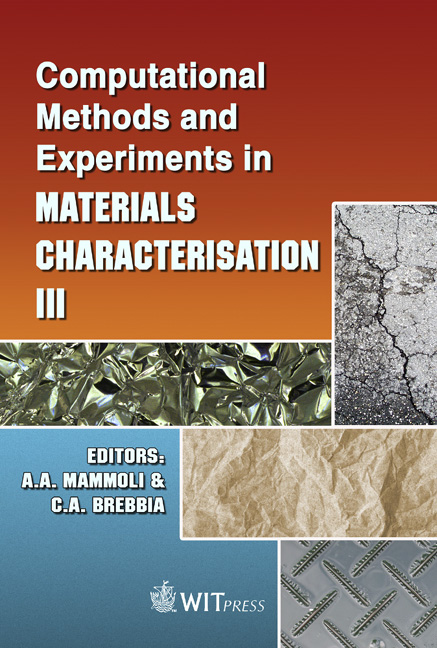Hardness Determination Of EBiD-layers Containing Tungsten And Cobalt
Price
Free (open access)
Transaction
Volume
57
Pages
10
Published
2007
Size
1,013 kb
Paper DOI
10.2495/MC070081
Copyright
WIT Press
Author(s)
T. Wich, T. Luttermann & I. Mircea
Abstract
Electron Beam induced Deposition (EBiD) is a promising process technology for nano-structuring and -prototyping inside a scanning electron microscope (SEM). Firstly, the EBiD-process used for layer deposition is described. We have performed nanoindentation experiments on EBiD-layers with the purpose of determining their hardness. A special setup for nanoindentation inside the SEM is described. Before performing tests on EBiD-layers, calibration measurements on fused silica and sapphire were necessary. Hardness of the silicon wafer substrate and of the EBiD-layers has been also determined. The layers were small quadrates, with dimensions in the range of 20 x 20 µm2, with a thickness varying between 93 and 2256 nm. Nanoindentation tests on the deposited layers revealed values between 7.1 and 10.0 GPa for tungsten containing deposits and between 3.4 and 3.5 for cobalt containing deposits depending on the metal-content. Keywords: Electron Beam induced Deposition, hardness, nanoindentation. 1 Introduction The effect of Electron Beam induced Deposition (EBiD) was first observed in 1933, by R.L. Stewart. At that time he noted that on surfaces under electron bombardment thin insulating films have been observed [14]. These insulating films have been regarded as an inevitable effect in evacuated electron tubes. Ennos et al. have conducted tests with different seals, grease materials, and oil for vacuum pumps, for determining their influence on the contamination thickness [6]. Based on the results of these tests, Christy developed in 1960 a theoretical model which can explain the deposition of polymer films under electron bombardment [2]. Later, these deposits have always been seen as a
Keywords
Electron Beam induced Deposition, hardness, nanoindentation.





